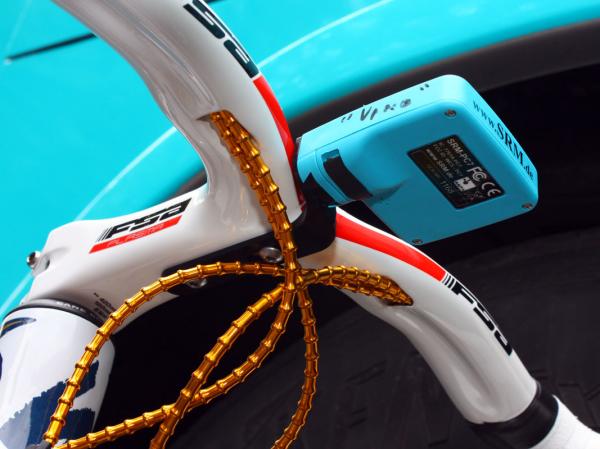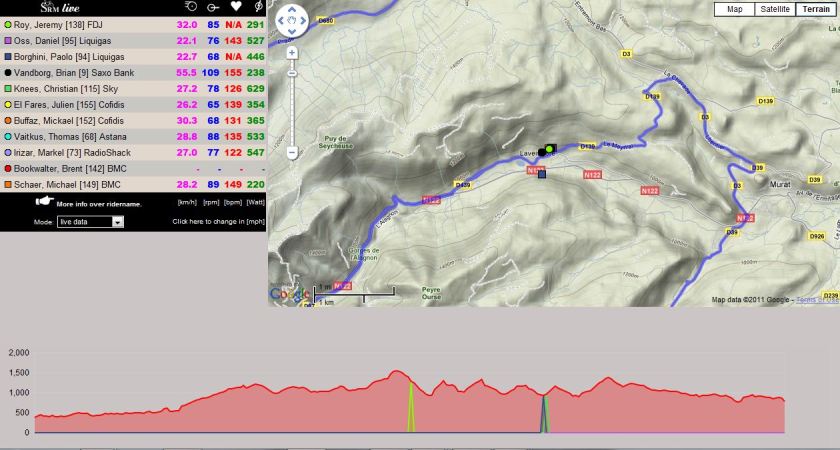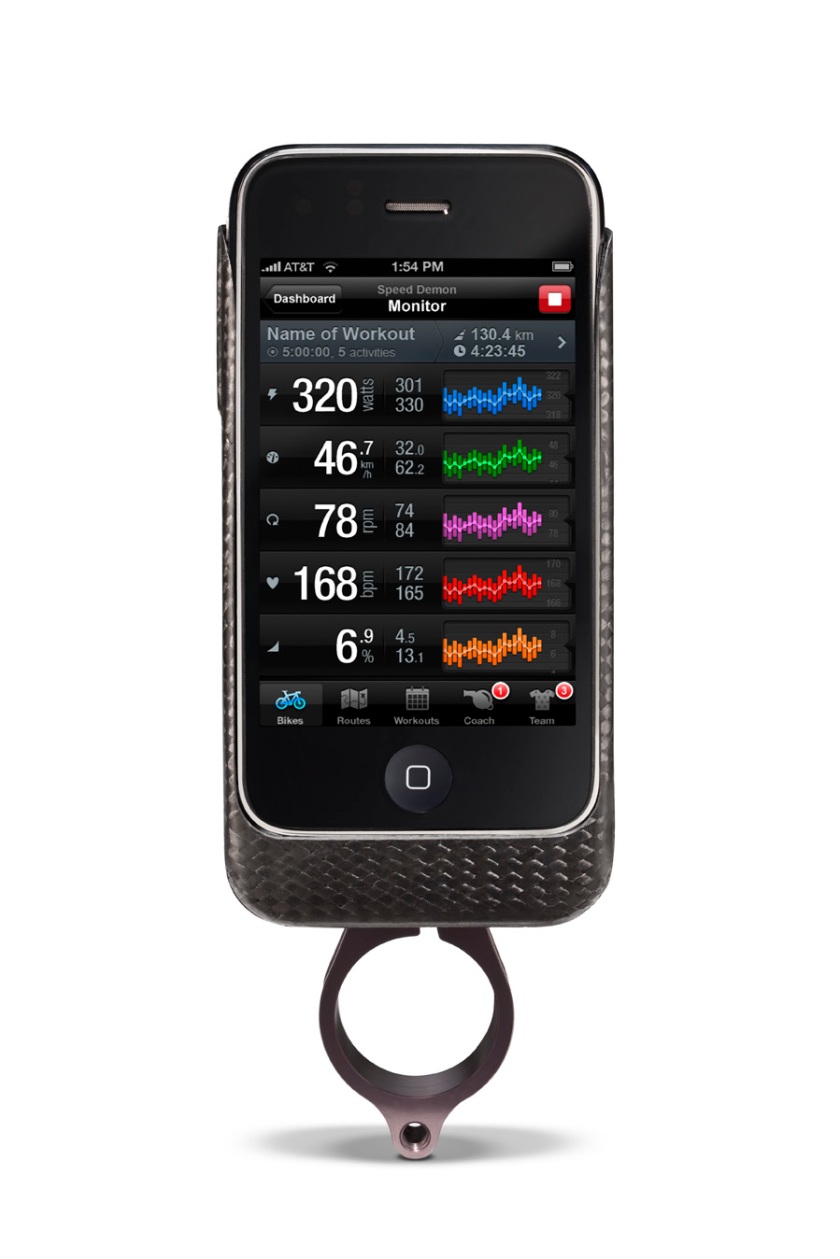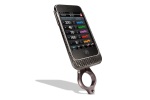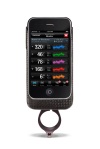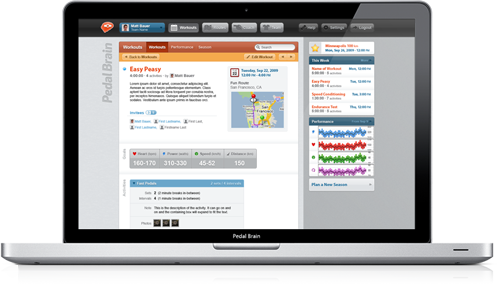from road.cc
Preparing for the Hell of the North is very different to any other race. The savage cobbles place huge demands on equipment and the team mechanics go to special lengths to prepare the bikes for this race, more than for any other race on the calendar. In our first Paris Roubaix tech piece we looked at the bike choices and some of the set-ups employed by the riders. In this, our second Paris Roubaix tech piece we’re going geek-out taking a closer look at some of the unqiue setup solutions on show in the pits at the start of the 2013 Paris-Roubaix. So, let’s talk rubber, air, and special equipment…
Tyres
What you really notice about the equipment is that the race is all about tyre choice. Tyres are king at this race.
The cobbles are in a poor state of repair compared to the smoother pave of Flanders. Most are access roads used by agricultural vehicles the rest of the year. For this reason there’s a widespread change from the 25mm tyres most common at Flanders to 27mm (and wider tyres in some case) at Paris-Roubaix. It seems that the majority of riders settled on 27mm, though we did spot 28 and 30mm tyres. The wider tyres allow you to run lower pressures with less risk of getting a flat. Try running a small volume 23mm tyre at these pressures on these roads and you won’t get far.
Success breeds success. Over the past few years the small French tyre manufacturer FMB has become the most common choice amongst the peloton. They make tyres the old way, by hand, and it’s their 27mm Paris-Roubaix with its amber sidewall and file tread that nearly all riders and teams plumped for. None of the teams are sponsored by FMB, but they’ll happily shun their sponsorship commitments to their regular tyre brand and will pay for them. The riders want the best, and FMB do appear to be the best at the moment.
Other tyres spotted include Vittoria’s Pave Evo CG in 27mm width. It’s a well regarded tyre and is easy to spot with its green stripe, and it comes in tubulars for the pros and clinchers for everyone else. Like most of the Paris-Roubaix tyres it has a file tread pattern.
Continental’s Competition Pro Ltd 28mm was spotted on a few bikes.
And Mavic, who don’t make a 27mm tubular tyre, had these interesting tyres glued to deep-section Cosmic carbon wheels. They could be a tyre from Challenge, a french tyre manufacturer who make a wide selection of wider tyres, or even FMB.
Cannondale are sponsored by Vision wheels and Kenda tyres this season. The widest tyre that Kenda make is a 24mm tubular, so these are more likely a rebranded tyre, possibly a Veloflex.
Dugust, a tyre brand popular with ‘cross racers, had a little presence at the race. This AG2R rider had deemed the popular 27mm choice not quite wide enough, and had these 30mm Dugast Paris-Roubaix tubular tyres fitted to Fulcrum Racing Speed XLR 35 wheels. The tyres forced most of the team from their Izalco road bikes to the company’s Mares CX bike for clearance.
Bianchi are sponsored by Vredestein, but judging by the tyre manufacturers website, they only make a tubular up to 23mm wide. So either these are specially made, or the team have gone to a manufacturer like Veloflex. Getting a definite answer can be tricky, the manufacturers and sponsors obviously don’t want us focusing on the non-official equipment they’re using. But we do and are. Don’t believe the sticker on the tyre.
Tyre pressure
Beside tyre choice, the other really important decision is tyre pressure. But tyre pressure is the most well guarded secret in the pro peloton. Most of the mechanics were very reluctant to divulge such important information. The Team Sky mechanic even went as far as telling us: “No chance. That’s top secret.” and refused to even give a ballpark figure.
Juan Antonio Flecha’s mechanic was a bit more obliging, telling me they used an average of 5 – 5.5 bar (72 – 80 psi) across the team. Getting any mechanic or rider to tell you what pressure they’re riding is harder than finding a needle in a haystack. Some teams put a lot of time and effort testing tyres, wheels and pressures on the cobbles before the race so they’re obviously cagey about sharing such information. Choosing the tyre pressure is down to experience and its compromise between shock absorption on the cobbles and speed on the road sections, and clearly not wanting to risk a puncture. We did manage to spot Heinrich Haussler inflating his tyres to 5 bar (72psi) and a smidge more in the rear tyre – we just happened to be in the right place at the right time when he was making personal last minute checks to his bike.
Some riders are very specific about, like Heinrich Haussler here, while others will be happy to leave it to their mechanics. The choice of tyre pressure comes down to personal choice and is influenced also by factors like rider weight – there can be a 15kg weight difference between the lightest and heaviest riders – how much testing they’ve done on the pave and the weather conditions. Most of the teams do a lot of testing on the pave before the race and you can bet they’re obsessing mostly about tyre pressure. Ride style is also an important factor, someone like Tom Boonen is smoother and better at picking a smooth line on the cobbles than less experienced riders, who might thump into every single cobble.
Wheels
The Classics are races where traditional tried-and-tested setups usually trump any modern products. That said, we’ve noticed a real turning point in the past few years in terms of wheel choice, most are now riding deep-section carbon wheels.
It was usually the case that the carbon wheels would be left in the team truck and out would come the box section – Ambrosio and Mavic – aluminium rims reserved for just this one race.
Developments in carbon fibre generally, but specifically wheels, has given riders the faith and confidence in the products and that why won’t fail. That’s important in winning the riders over. There’s still some 200km of road so aero and speed are very important, as much as surviving the cobbles is. The significant change really came about in 2010 when Fabian Cancellara won the race on a set of Zipp 303 tubular wheels. He’s now riding Bontrager’s Aeolus D3 wheel, and we had an interesting chat with Trek’s Ben Coates. He told us that last year the team broke three wheels. Just three wheels in what is now a very long season of racing. That’s an impressive record.
We used to see a lot of cyclo-cross bikes. Why? Clearance. Many road race frames just won’t take anything bigger than a 25mm tyre, and even if they did there’s naff all space to fit a grain of dirt between frame and tyre. But it’s not just about being able to fit bigger tyres between the frames, you need a clear amount of space between the tyre and frame to avoid small stones puncturing the tyres when squeezed between frame and tyre. This is as critical in a dry race like this year’s edition, as when it’s wet and muddy. And we did see a lot of punctures in the race.
Cyclo-cross bikes obviously have huge clearance so take the bigger tyres with loads of space to spare. They usually have higher bottom brackets for their off-road handling and this isn’t such a good thing when switching from a road bike to a ‘cross bike for a pro rider. That’s why many manufacturers have designed special framesets in the past, which look very similar to the production frame. Look closer and there’s loads more space around the fork and stays, and they might have different dropouts. You won’t see these bikes on the shopfloor.
Other special equipment changes
Saxo are sponsored by Prologo and most of the team had the new Scratch CPC saddles. You usually see saddles covered with sticky tape or adhesive patches in time trials, to prevent sliding when perched on the nose. Less of a problem on the pave, but the extra grip offered by the unique saddle could make a small difference.
Double bar tape was common, but not universal. Heinrich Haussler prefers single layer bar tape.
Depending on conditions and the weather, the riders will mainly select the 53t chainring. There’s no climbing to speak of on the course, just a couple of hundred metres really. That said, with factors like tiredness and the strong headwinds, and some of the sectors have a slight gradient – like the Arenberg which is flat, dips in the middle and climbs towards the end – can push riders into a smaller gear. Dropping down to a 39t chainring would be too big a gap, so most riders had opted for 44 and 45t chainrings, to lessen the drop. We saw a fair few riders in the small chainring, especially those towards the back of the bunch.
Most of the Shimano sponsored teams had chainrings that, rumour has it, were delivered just a few days before the race, hot of the CNC machine. You can’t take a Shimano Dura-Ace 53/39 chainset and fit a 44/45t chainring without reducing the shift performance. Shimano produces a specific 53t chainring with the pins and ramps in different places to harness their famously smooth shifting when used with a bigger inner chainring. They denote this as Type A and Type B.. You can tell because they’re a different colour to the crank arm, they usually match, and there’s none of the usual writing on that denotes their size. Looking more closely at the inside of the small chainring reveals their size though. Only Shimano is fussy about chainring compatibility like this.
So clean you could eat your dinner of it. Most riders had 11-25 cassettes, but we did spot one or two 11-23 setups.
Directions s’il vous plaît
On a race with so many cobbled sections, it’s good to know what’s coming up next. So some riders tape the list of sectors and their distance into the race on the top tube or stem. We saw a range of approaches.
Some, like Lotto-Belisol, had printed cue cards taped very neatly to the top tube, and there was clearly a team decision as each bike had them.
Other teams just leave it up to the riders, and some made a tidier job of it than others. We can barely read the writing on this one. it’s just a mess.
Needs a longer stem.
Needs a bit more sticky tape.
Can’t see this one staying put either.
A colour-coded beauty. Somebody likes Excel.
Chainguides and bottle cages
Losing bottles on the rough cobbles is a very real factor. Some teams use a metal cage, so they can bend the wings in and force a tighter grip on the bottle. Some teams don’t have the same option, so resort to clever touches to keep the bottles in the cages. Saxo-Tinkoff smartly applied small strips of sandpaper to the insides of the cage. A good way to make your bottles look very tatty.
Also important is preventing a derailed chain. The chain flaps about a lot on the cobbles, and the risk of a dropped chain is prevented with a chain guide.
SRAM now produce their own version, it’s a small bit of bent metal and fixes to the front mech and sits very close to the inner chain ring.
Canyon and Ridley had a chain guide that fixes to the seat tube water bottle mounts. Perhaps more secure, but heavier.
SRM mounts
Most riders use SRM’s PowerMeter, and the German company has a new clamp with a clip to prevent the head unit from bouncing off on the cobbles or in a race. No need to tape it up anymore.
Some still apply a layer of tape around the unit just to be on the safe side.
Some use a CNC-machined clamp like the K-Edge aluminium clamp.
Extra brake levers and gear shifters
A lot of the time the riders will clasp the tops of the bars. For this reason some riders had fitted secondary brake levers, more commonly seen on cyclo-cross bikes, to their road bikes. You might think there’s no need to brake on the cobbles, but when racing in a huge bunch it can be the difference between staying upright and hitting the deck.
Shifting gear is also tricky on the cobbles, so many Shimano Di2 bikes had the extra shift box zip tied to the handlebar, allowing the rider to change gear without moving their hands over to the hoods.



































